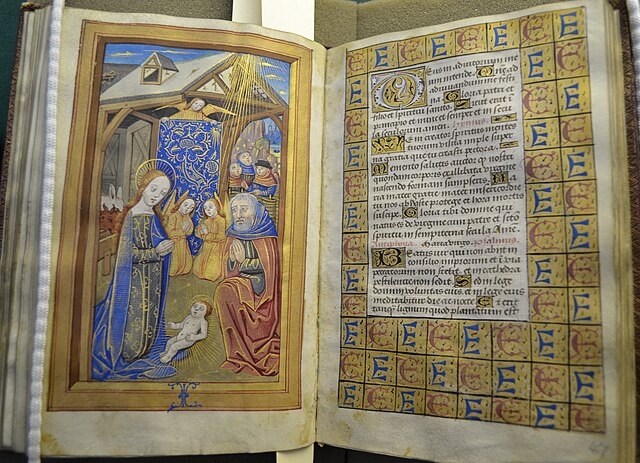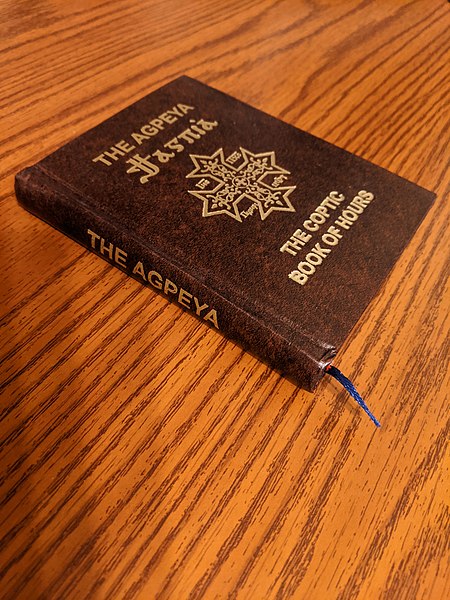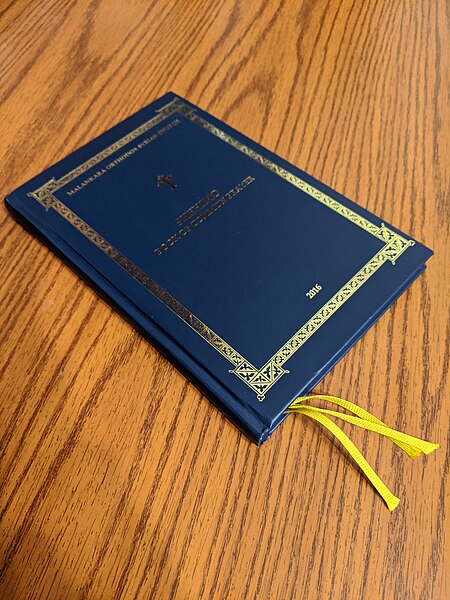Books of hours are Christian prayer books, which were used to pray the canonical hours. The use of a book of hours was especially popular in the Middle Ages, and as a result, they are the most common type of surviving medieval illuminated manuscript. Like every manuscript, each manuscript book of hours is unique in one way or another, but most contain a similar collection of texts, prayers and psalms, often with appropriate decorations, for Christian devotion. Illumination or decoration is minimal in many examples, often restricted to decorated capital letters at the start of psalms and other prayers, but books made for wealthy patrons may be extremely lavish, with full-page miniatures. These illustrations would combine picturesque scenes of country life with sacred images.

Opening from the Hours of Catherine of Cleves, c. 1440, with Catherine kneeling before the Virgin and Child, surrounded by her family heraldry. Opposite is the start of Matins in the Little Office, illustrated by the Annunciation to Joachim, as the start of a long cycle of the Life of the Virgin.
An early 15th-century French book of hours (MS13, Society of Antiquaries of London) open to an illustration of the 'Adoration of the Magi'. Bequeathed to the Society in 1769 by the Revd Charles Lyttleton, Bishop of Carlisle and President of the Society (1765-8).
Example of a more affordable and thus more common book of hours: Excerpt from a "simple" Middle Dutch book of hours. Made in the 2nd half of the fifteenth century in Brabant.
Even this level of decoration is richer than those of most books, though less than the lavish amounts of illumination in luxury books, which are the ones most often seen reproduced.
A prayer book is a book containing prayers and perhaps devotional readings, for private or communal use, or in some cases, outlining the liturgy of religious services. Books containing mainly orders of religious services, or readings for them are termed "service books" or "liturgical books", and are thus not prayer-books in the strictest sense, but the term is often used very loosely. A religion's scriptures might also be considered prayer books as well.
Image: Agpeya Breviary
Image: Shehimo Breviary






